Last-Minute NYC Holiday Gift Guide 🎁
We’ve created a holiday gift guide with presents for the intrepid New Yorker that should arrive just in time—


Astoria has been long synonymous with everything Greek. While this isn’t baseless (in the ’90s, the Greek community in Astoria was said to be the largest Hellenic city in the world outside of Athens), in recent years Astoria has become a multicultural hub that transcends the reputation (now misnomer) of being New York City’s Greektown.
Just a few decades ago, the two major ethnic groups were Greeks and Italians but today, Astoria is one of the most diverse neighborhoods in Queens, the most diverse of New York City’s boroughs. According to recent Census data people from nearly 100 countries live in Astoria, ranging from Greeks and Italians to Mexicans, Ecuadorians, to Moroccans and Egyptians–and everything in between. “No one group dominates,” reports NPR’s Codeswitch. There is even a section of Steinway Street dubbed “Little Egypt,” but we’ll get to that.
All this diversity makes Astoria a really cool place to hang out, with lots of interesting restaurants and some great parks and museums too. We’ve made a guide of some of our favorite places in Astoria, and we hope that you’ll love them as much as we do.
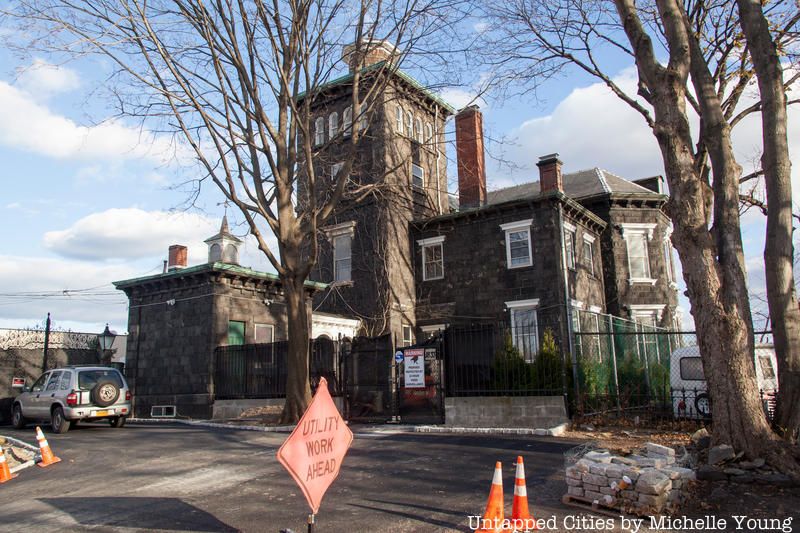
The Steinway Mansion is a historic home on a hill in northern Astoria. The mansion was originally built by Benjamin Pike, Jr., a renowned manufacturer of scientific instruments around the time of the Civil War. Originally from England, Pike wanted a new house for his family. The two-story mansion was built on what was once a 400 acre parcel of land, and consists of 27 rooms. The house was not enjoyed for long though, with Pike’s early demise.
During this time Steinway & Sons was in need of space to expand their company from the confines of West Village. And so, the Italianate Villa style mansion was sold by Pike’s widow to William Steinway, son of the founder of Steinway & Sons in 1870 for $127,000.
The mansion stayed in the Steinway family for over fifty years before being sold to Jack Halberian, an Armenian who worked as a tailor. The mansion caught Halberian’s eye when he was a teenager and he purchased it from the Steinway family in 1926. Michael, Jack Halberian’s son maintained the mansion after his father until his death in December of 2010; after which mansion went on sale. Today efforts are being made to open the mansion to the public. In 2013 the organization The Friends of Steinway Mansion was formed to spur efforts to renovate and preserve the mansion. However, the organization is yet to have raised sufficient funds, nor have they found a buyer.
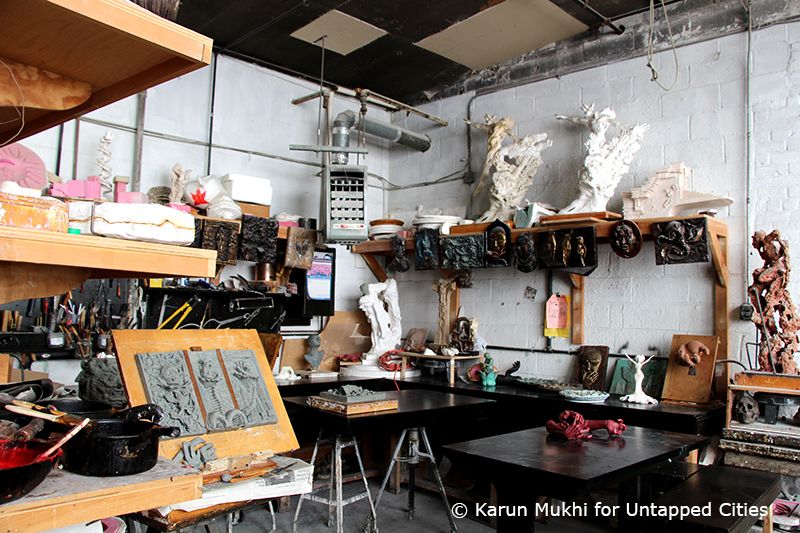
While the name Steinway resonates with the Steinway and Sons piano company for obvious reasons, unknown to many, the estate is also home to a major foundry site by the name of the Modern Art Foundry, located in the carriage house of the property. Many of the most distinguished sculptures in and around New York City, from Alice in Wonderland in Central Park to the Fiorello LaGuardia statue in LaGuardia Place, were all made in Astoria, in the former carriage house of the Steinway Mansion. While usually populated with artists supervising their works and the foundry staff, students also work in the foundry as part of their curriculum.
While the Modern Art Foundry runs tours typically just for clients of auction houses and art dealers such as Christie’s and Sotheby’s, Untapped Cities will be hosting a special behind the scenes tour of the facility where you can see a live bronze pouring. The first available date will be on February 24th:
Behind-the-Scenes Tour of Modern Art Foundry
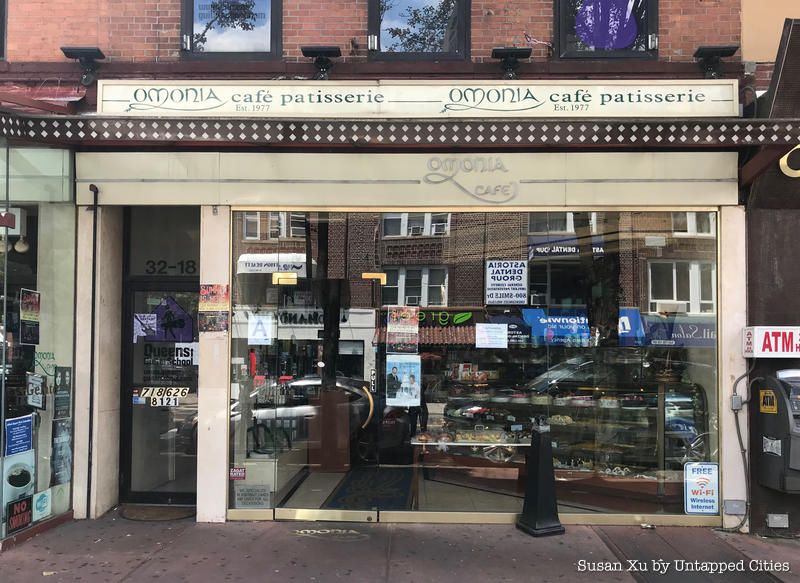
Located off of the N and W line on Broadway is a cafe and restaurant with delicious sweets and savories. This Greek coffeehouse boasts a variety of pastries that range from cannoli to baklava, along with a street-side view and an outdoor sitting space. A great thing about the cafe is the late hours. Open until 4 a.m on Friday and Saturday nights, the cafe–situated in a popular nightlife part of Broadway–is a perfect last stop for late night revelers who have had a drink too many.
But arguably the best feature of the cafe–and what makes it a must-visit for anyone in the area–is their fusion of Eastern European and Italian sweets, known as Cheesecake Baklava. The scrumptious treat consists of a layer of fluffy cheesecake, sandwiched between two savory, nut-laden layers of Baklava, with the cheesecake in the middle mellowing the syrupy, rich sweetness of the baklava. The fusion of these two ostensibly incompatible sweets has become one of their most popular delicacies.
Omonia Cafe is located at 32-20 Broadway, Astoria

All along Steinway Street, especially from 30th Ave. to Astoria Blvd., are numerous hookah lounges that serve a variety of hookah flavors with an assortment of teas. While some of them don’t serve alcohol, there are plenty that also have a bar menu.

Photo by Peter Aaron/Esto. Courtesy of the Museum of Moving Image
While countless movie scenes have been filmed in New York City, when you think of movie studios in New York City, and Astoria may not be first on you mind. And yet, Kaufman Astoria Studios has been the site of many features and short movies since the 1920s.
Next to Kaufman Astoria Studios–quite fittingly–is the Museum of Moving Image. Reopened in 2011 after a $67 million expansion, the museum hosts exhibits covering the advancement of film, television, and digital media technology throughout the years. The exhibits are mostly set in chronological order, allowing visitors to walk through time and witness the marvels of cinema and the innovative techniques and technologies as they view the museum’s extensive collection. Memorable exhibits have allowed visitors to step onto the set of Mad Men, revel in”How Cats Took Over the Internet,” play indie video games, and currently on display is an exhibit on Martin Scorsese’s work.
In addition to cameras and sound recording devices, the museum also contains some technological memorabilia from notable movies, such as the doll used in the The Exorcist scene where Regan rotates her head.
The museum is located at 36-01 35th Ave, Astoria.
While the museum is typically $15 for adults, admission is free on Fridays. Museum hours are available on the website.

The Noguchi Museum preserves the works and artistic visions of the American-Japanese sculptor Isamu Noguchi in his former studio. Located a block from the Socrates Sculpture Park, the Noguchi Museum holds the world’s largest and most comprehensive collection of Noguchi’s sculptures, drawings, models, and designs. Currently on display is the exhibit “Self-Interned, 1942: Noguchi in Poston War Relocation Center,” covering the period when Noguchi voluntarily interned himself during World War II hoping to teach craftsmanship, art and improve life there.
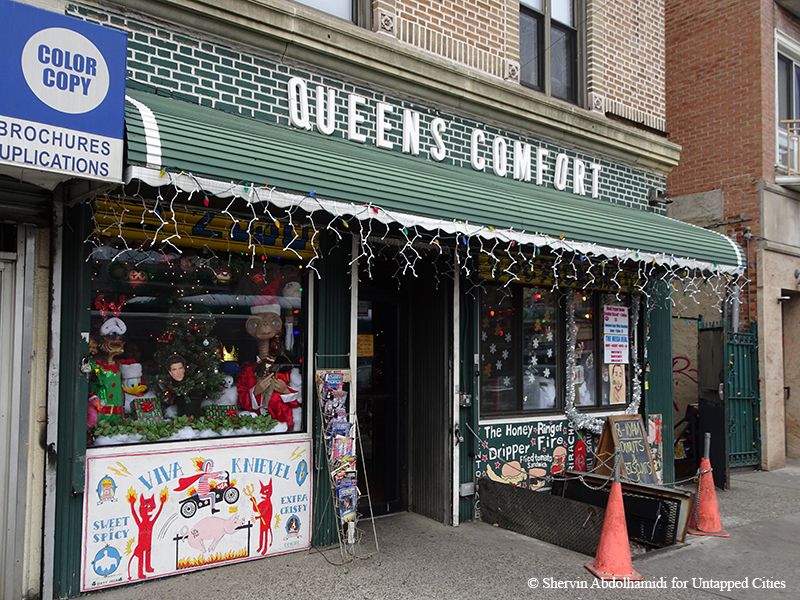
Brunch is as popular in Astoria as anywhere else in the city. And while there are a bevy of places to go to on Sunday mornings, few places elicit lines of people standing outside in sub-freezing weather on Sunday mornings like Queens Comfort. Located on the corner of 30th Avenue and Steinway Street, the restaurant serves American comfort food in an eccentric, yet exceptionally welcoming and friendly setting.
The front window display of the restaurant is an appropriate teaser of the restaurant’s quirkiness, with a odd assortment of dolls and toys on display–included an E.T doll with a Santa hat! Walk inside the restaurant and you will be treated to a miscellany of toys, dolls, goofy pictures, and framed pictures; an eclectic array of toys sit on shelves in one corner; one wall is shrouded in frames holding pictures of a bunch of different people–many of which are babies; at the back wall a movie is playing on a projector screen; in addition to the front window display, the outside wall of the restaurant features goofy drawings.
George, one of the employees and long-time friend of the restaurant owner explains that the toys came from him and the owner Donny. Montana (the baker) and George associate much of the fun, creative vibes of the restaurant to Donny, also an artist and former filmmaker. George recalls when Donny came in one day and said, “I think I want to customer’s pictures on the walls”–hence all the pictures on the wall.
All in all, despite the eccentricities, there is also a strong undertone of friendliness and comfort. George and Montana describe the place as “informal and homey”. They believe a great deal of that is due to the friendship among the staff, something that is very tangible. Montana also mentioned the baby and customer pictures on the walls as something that the customers loved–something that “made them feel a part it.”
Queens Comfort also has two resident DJ’s–the restaurant’s first customers–who play on the weekends. In fact, many of the people who work with Queens Comfort, including their resident artists, their DJ, and numerous other employees started off as customers who loved the place.
Between the live DJ, and the delicious menu, brunch is definitely the time to check out Queens Comfort. However, make sure you go early, because the lines get long fast!

Walk past El Basuero anytime in the warm summer months and your gaze will inexorably be drawn inside. The heavily decorated, festive bar and restaurant opens its sliding, all-glass windows in the summer months and the upbeat sounds of music resonate from within, giving the place a very tropical vibe. Moreover, on the weekend if there’s an important soccer match going on, be sure to expect a rowdy, animated and packed crowd.
During World Cup 2014 El Basuero was our go-to place in Astoria. Amidst the cacophony of cheers and jeers, and conglomeration of flags and jerseys of this Colombian restaurant, you would have thought that you are on the beaches of Colombia, watching the World Cup with the kind of zest for “futbol” that is exclusive to South America.
El Basuero is located right outside the Steinway Street station. It is typically packed on the weekends, especially when there is “futbol” to be watched!
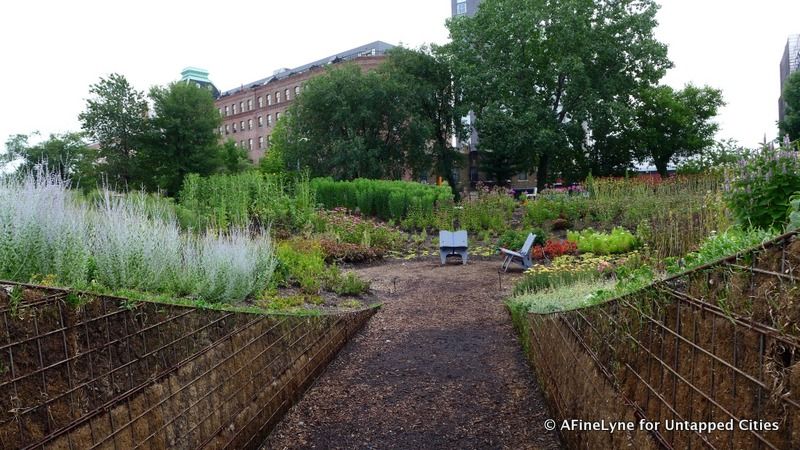
Want to see art on the weekend but don’t really feel like staying indoors? Well you can cover both at the Socrates Sculpture Park in Astoria. Named in honor of Socrates, the Greek philosopher, the name is a tribute to Astoria, which holds the largest Greek community in New York City.
This outdoor museum and park features a variety of modern sculptures and multi-media installations and exhibits in a sprawling grass lawn with a view of the East River and Roosevelt Island.

Also named in homage to Astoria’s Greek roots, this small park features various iconography and monuments from ancient Greece. There are Greek statutes, an amphitheater, and even live music and dancing, with Greek nights every Tuesday and Italian nights every Wednesday.
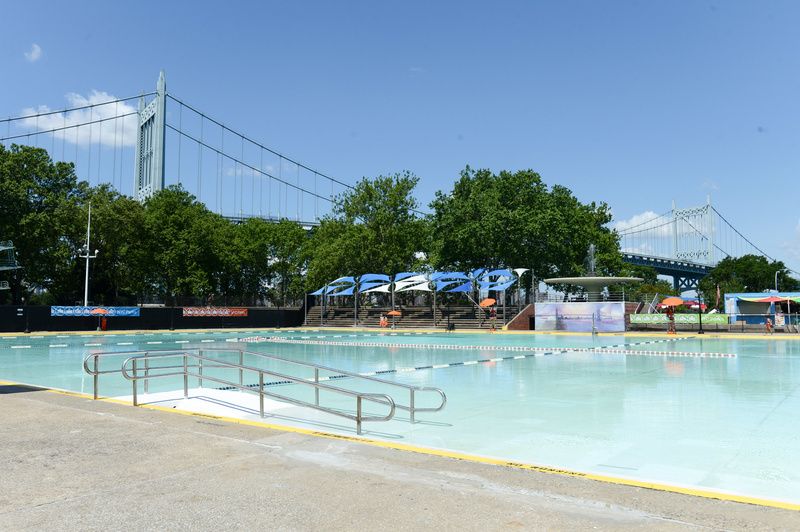
Image via NYC Parks and Recreation
Widely known for its outdoor pool–the largest and oldest in the city–Astoria Park is a beautiful, quaint riverside park that offers a lovely vantage point of Manhattan. In addition to the pools, which were used for qualifying events for the 1936 and 1964 Olympics, the park has numerous tennis courts, a skate park, and a running track. Astoria Park also encompasses both the Hell Gate Bridge and the Robert F. Kennedy Bridge (Triboro Bridge), providing unique vantage points for both the bridges.

The name Steinway, and Steinway Street all stem from the prominent piano maker, Henry Engelhard Steinway’s factory. After originally starting off in West Village, Steinway moved his factory to Astoria. To this day the Queens factory supplies the Americas with their distinguished Steinway & Sons pianos.
The factory is located in northern Astoria, on what has been aptly named Steinway Place. The factory is a light, airy, and functional space where pianos are built in the same way they were in the 19th century. Photographer Christopher Payne who documented the Steinway & Sons factory described the manufacturing process of the factory in a 2012 openhousenewyork talk. Payne states that the company uses the same “industrial processes that were cutting edge” when first developed, many of which were developed particularly for manufacturing pianos.
These processes, and the meticulous, awe-inspiring craftsmanship that go into the year-long process of making each of these incredible instruments can be seen on a free tour of the factory. For information about tours simply email them at info@steinway.com to make reservations.

While Astoria is best known for its Greek, Egyptian, and Moroccan multicultural diversity, there is also some Hawaiian components there too. Located a few blocks away from the Museum of Moving Images, on a nondescript street is a ukelele store that is hard to miss.
Uke Hut is a specialty store that is reputed as the “first ukelele store in New York City.” The tiki lamp and musicians frequently performing at the entrance make the store hard to miss, despite its location in a less popular part of Astoria. In addition to concerts, Uke Hut also offers private ukelele lessons seven days a week for those who wish to learn this Hawaiian instrument.
Make sure to check out Uke Hut’s website for more information about concerts and private lessons.
Uke Hut is located at 36-01 36th Ave, Astoria

The name Astoria is synonymous for many with the bustling shopping street, Steinway Street. Spanning from Northern Boulevard to Berrian Boulevard, the 2.4 mile street is teeming with local shops and eateries. While Astoria is purported for being the Greektown of New York City, the busiest parts of Steinway Street (from 34th Ave. to Astoria Blvd) adequately showcases the multicultural diversity of the neighborhood. Check out exquisite Turkish crafts, imported straight from Istanbul at the Grand Bazaar; enjoy Colombian cuisine at the quirky dining space of El Basuero; or perhaps smoke some hookah while drinking tea in the numerous Middle Eastern-style cafes along a stretch of Steinway Street which has been dubbed “Little Egypt”.
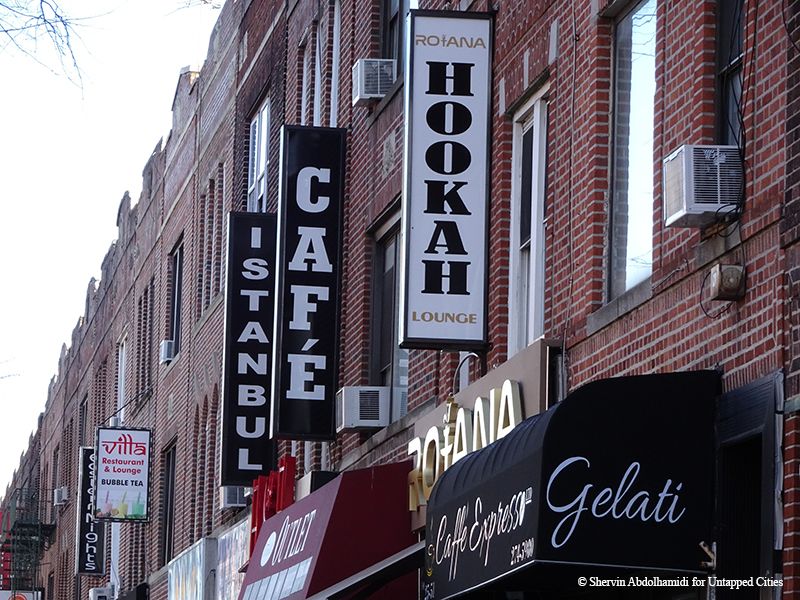
The history of Steinway Street is deeply intertwined with the eminent Steinway and Sons piano company, with the street being a central part of what is historically known as Steinway Village. Spanning from Ditmars Blvd to the East River, and from 36th St. to Hazen St., with Steinway Street at the heart of it, Steinway Village was effectively a city unto itself; according to Steinway and Sons, it “had its own foundries, factory, post office, parks and housing.”
To this day Steinway Street upholds its original name, a homage to the economic growth induced by the company. Astoria is a like an urban United Nations, with people from nearly 100 countries living there, and Steinway Street is at the center of this multicultural neighborhood–a diversity that is evident as you move your gaze from one store window to the next.

Ever wonder what happens to the dirt and material that’s extracted when excavating a tunnel? Well within LaGuardia Airport’s leasehold is a man-made topographic feature that was once up to 86 feet high (similar in height to an 8-story building) called Ingraham’s Mountain. The “mountain” was made from the excavated material during the construction of the third tube of the Lincoln Tunnel in 1936. The mountain was reshaped in the last few years to become a parking facility for LaGuardia Airport staff, reducing its height from 20 to 30 feet. You will now see buses frequently plying the streets between the airport and Ingraham’s Mountain. The bizarre Ingraham’s Mountain will be demolished during the upcoming renovations due in LaGuardia.
Next, check out our guide to the Top 10 Secrets of LaGuardia Airport.
Subscribe to our newsletter